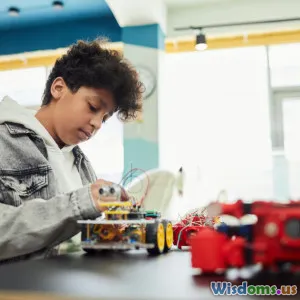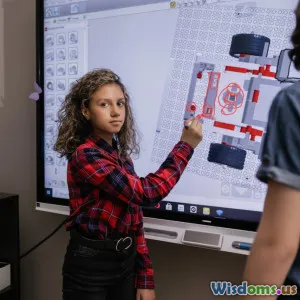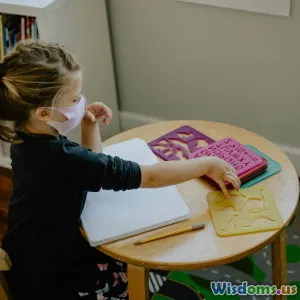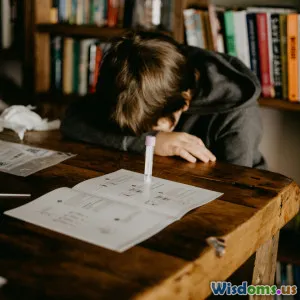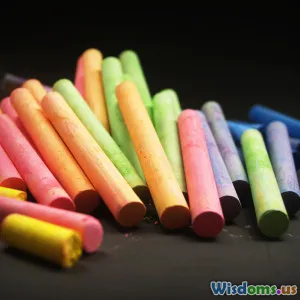
Are Creative Teaching Methods the Key to Innovation
15 min read Explore how creative teaching methods drive innovation, student engagement, and future-ready problem-solvers, with examples, data, and actionable insights for educators and leaders. (0 Reviews)
Are Creative Teaching Methods the Key to Innovation?
Introduction: Breaking the Mold in the Modern Classroom
Imagine stepping into a classroom where students paint solutions, debate ideas in virtual worlds, break codes to solve math problems, or collaboratively redesign city spaces using Minecraft. Lessons breathe with life, curiosity fills the air, and innovation is not just a goal—it’s the standard. But are these creative teaching methods simply fun diversions, or do they hold the power to shape future innovators?
In a world of rapid technological change, where automation disrupts old paradigms and new industries emerge overnight, preparing the next generation for a volatile, creative economy is more crucial than ever. The debate over traditional education versus creative, student-centered approaches intensifies. Does embracing creativity in teaching unlock true innovation, or does it risk sacrificing rigor and measurable achievement?
This article delves into the heart of this question—revealing how creative teaching methods can create climates for innovation, what the evidence says, and how educators around the world are making inroads. Ultimately, we’ll discover whether creative teaching is just an education buzzword or truly the engine of the next generation’s breakthroughs.
Understanding Creative Teaching Methods
Creative teaching methods go beyond simply transmitting content; they engage learners as co-creators of knowledge. Techniques often include:
- Project-based learning (PBL)
- Inquiry-based strategies
- Integrative arts or STEAM initiatives
- Gamification & simulation
- Collaborative and interdisciplinary design thinking
- Storytelling and role-play
Rather than adhering to rote learning and memorization, creative methodologies emphasize critical thinking, experimentation, and relevance. The underlying intent is to nurture curiosity, problem-solving, and adaptability—key drivers of innovation.
A Shift From Teacher-Centric to Student-Centric
In traditional models, the teacher is the sage on the stage. Creative education flips the script: the educator becomes a facilitator, mentor, and coach, helping learners actively construct meaning. As Harvard education professor Tony Wagner notes, innovation isn’t born from standardized answers but from cultivating environments where questioning and risk-taking are safe.
“Our current education system teaches students to solve problems that have been solved before, not to create solutions for problems that have not yet been identified.”—Tony Wagner
The Connection Between Creativity and Innovation
The link between creativity and innovation is one of transformation: creativity generates original ideas; innovation applies them to solve real-world challenges. For students, a creative classroom doesn’t just encourage artistic expression—it’s a microcosm for real-world problem-solving, team collaboration, and iteration.
Psychologist Sir Ken Robinson, a vocal advocate for creativity in education, argued, "Creativity is as important in education as literacy and we should treat it with the same status.” If innovation is the ultimate application of creative thinking, then nourishing creativity in schools isn’t just desirable—it’s essential.
Skills Fostered By Creative Teaching
- Divergent thinking: Generating multiple, unique solutions
- Critical analysis: Evaluating and refining ideas
- Communication and collaboration: Sharing and improving concepts
- Resilience and adaptability: Embracing failure as part of learning
Research by the World Economic Forum lists creativity, critical thinking, and problem-solving among the top skills needed for the jobs of the future. Creative classrooms, therefore, serve as incubators for what tomorrow's innovation economy demands.
Real-World Examples: Creative Teaching in Action
Finland’s Phenomenon-Based Learning
Finland, ranked among the world’s top education systems, implemented phenomenon-based learning in 2016. Instead of siloed subjects, students tackle broad, real-world topics (phenomena) such as poverty, climate change, or entrepreneurship. For example, when studying "Sustainable Cities," students might integrate math, science, civics, and art by designing urban plans, calculating emissions, and lobbying local officials.
Outcomes: According to Finnish education authorities, students report higher engagement levels, and national innovation indices remain among the world’s highest (source: European Innovation Scoreboard 2022).
The Maker Movement and Project-Based Learning
Schools worldwide are adopting maker spaces—hands-on workshops where students prototype robots, make art from recycled materials, and invent assistive devices for community members. This trend is strongly associated with project-based learning:
-
At High Tech High in California, students build underwater robots, produce documentaries, and even publish scientific research. The school boasts one of the highest student engagement and college entrance rates among charter schools (source: High Tech High Results and Impact 2023).
-
In Singapore, classroom time for “Passion Projects” allows students to invent startups or tackle personal challenges, reinforcing a robust national innovation economy.
Gamification and Simulation in Learning
Gamification introduces motivational game elements (points, storylines, competition) into education. Some cutting-edge teachers employ commercial platforms, while others build DIY adventures:
- Duolingo uses gamified mechanics for language learning, making the process addictive and fun; its 2023 study revealed a 4X increase in weekly active users compared to traditional methods.
- SimCityEDU partners with K-12 schools, challenging students to design cities amid sustainability crises—blending science, policy, and artistry.
Evidence: Do Creative Methods Really Stimulate Innovation?
While creative methods are intuitively appealing, their impact needs evidence. What does research reveal?
Improved Academic Outcomes and Engagement
A substantial body of research finds strong correlations between creative pedagogies and academic achievement:
- A 2017 meta-analysis by Gajda, Beghetto, and Karwowski spanning 120 experimental studies found that lessons making creativity integral enhanced learning in literacy, math, and science compared to traditional instruction.
- The ArtsEdSearch database documents that students participating in arts-integrated lessons not only outperformed in creative thinking tasks but also saw gains in standard test scores, attendance, and graduation rates.
Innovation in the Real Economy
Countries with education systems emphasizing project-based and creative learning (e.g., Finland, South Korea, Singapore) routinely top Global Innovation Index rankings. Many high-impact companies—including Google, IDEO, and Pixar—cite creative education experiences as fundamental to their innovative cultures.
Nurturing Entrepreneurial Spirit
Research from MIT's Abdul Latif Jameel World Education Lab shows students exposed to entrepreneurial and design thinking curricula exhibit higher levels of business creation and social enterprise participation, compared to those in traditional tracks.
Overcoming Barriers: Challenges in Scaling Creativity
Despite evidence and success stories, integrating creative methods faces hurdles:
Resistance From Standardized Testing
Traditional exams, which prioritize recall over originality, pose a challenge. Many teachers feel pressure to teach to the test, limiting room for creative exploration. As a result, creativity often gets "squeezed out" in high-accountability environments.
Solution: Countries like Australia and Scotland have started piloting portfolios and performance-based assessments, which measure process, collaboration, and creativity—aspects neglected by standardized tests.
Resource Constraints and Teacher Training
Not all schools have the funding for specialized spaces or materials (like makerspaces, robotics kits, or advanced art supplies). Moreover, teachers may feel unprepared to redesign curricula around creative tasks.
Solution: Professional development is key. Networks such as Edutopia and The Creative Thinking Project offer resources, mentorship, and case studies to empower educators worldwide. Classroom creativity needn’t require fancy gadgets—simple prompts, role-play, and local partnerships can suffice.
Cultural Mindsets on Failure
Innovation thrives where learners are unafraid to experiment and even fail. Yet in many cultures, high academic achievement is equated with perfection, creating fear of risk-taking.
Solution: Reframe failure as feedback. Spotify, for instance, asks teams to "celebrate their failures" and encourages open dialogue on what didn’t work. Adapting such mindsets for classrooms can demystify experimentation.
Building a Culture of Innovation: The Educator’s Playbook
1. Design Learning for Questions, Not Just Answers
Start projects with open-ended, authentic challenges. Instead of asking "What is the formula for photosynthesis?", ask "How might plants help us build better solar panels?"
2. Integrate Arts Across Disciplines
STEAM (Science, Technology, Engineering, Arts, and Math) lessons harness musical theory to teach ratios, drama for empathy in history, or sculpture for geometry. Cross-pollinating disciplines fosters lateral thinking.
3. Use Technology as a Creative Enabler
- Virtual Reality (VR): Bring ancient civilizations or molecular biology to life; foster immersion and imaginative understanding.
- Coding and Digital Storytelling: Encourage students to program video games or apps addressing local community needs.
4. Nurture Collaboration With Diverse Teams
Encourage group work spanning backgrounds, cultures, and learning styles. Real-world innovation rarely happens in isolation—teaching collaboration prepares future leaders to communicate and co-create.
5. Model Curiosity and Lifelong Learning
When teachers visibly learn new skills, embrace mistakes, and share their growth journeys, students internalize that innovation is a continual process, not a single endpoint.
Example: At High Tech High, all staff participate in ongoing learning projects and reflect publicly, setting a powerful example for students.
Case Study: Creativity Ignites Community Innovation
Nidhi, a 7th grader in rural India, attended a school moving away from rote memorization. Her teacher, using project-based approaches, asked students to brainstorm local problems. Nidhi led her group in designing a rainwater harvesting system, prototyped in class and then implemented with the town council.
No textbook could have taught Nidhi as much about physics, civic engagement, or entrepreneurship as this creative process. More importantly, she learned to see herself as a change-maker.
Creative Teaching Beyond Traditional Schools
Corporate Learning & Industry Training:
- Google’s famous "20% Time" (allowing employees to spend one-fifth of their time on personal, creative projects) led to the invention of Gmail and Google News.
- IBM’s “Design Thinking” workshops are now a global standard for creative, user-focused problem-solving—demonstrating that the same principles work in boardrooms as in classrooms.
Lifelong and Informal Learning:
Online education platforms, such as MasterClass and Khan Academy, employ storytelling, interactive scenarios, and mastery-based progression to foster creative engagement—a reminder that the need for innovation transcends K-12 schooling.
The Future: Creativity as the Currency of Innovation
The accelerating pace of change means tomorrow’s greatest opportunities and problems are yet to be imagined. Students educated for compliance and memorization will be replaced, in the marketplace and society, by those who can innovate, adapt, and envision.
What Can Educators and Leaders Do Now?
- Advocate for school policies and funding that prioritize creative, project-based experiences.
- Invest in professional development empowering all teachers—not just arts educators—to use creative methods.
- Connect with local businesses, nonprofits, and universities to offer real-world creative opportunities.
- Measure student progress in creativity and innovation—not just content knowledge—with rubrics, portfolios, and exhibitions.
As we look to the future, the value of creative teaching is only set to grow. Innovation is no longer a "nice-to-have"—it’s the foundation for resilience and progress in a rapidly changing world.
Conclusion: The Case for Creative Teaching as an Innovation Engine
Are creative teaching methods the key to innovation?
The evidence—in best-practice classrooms, research data, national success stories, and corporate breakthroughs—speaks clearly. Creativity in teaching is not about making school "fun" at the expense of learning; it’s about preparing students with the skills, mindsets, and experiences the future demands.
By flipping the educational focus from passive absorption to active creation, creative teaching methods unlock every child's potential as a thinker, maker, and leader. For educators, parents, and policy-makers alike, the message rings out: invest in creativity, and innovation will follow.
Rate the Post
User Reviews
Other posts in Creativity in Education
Popular Posts











